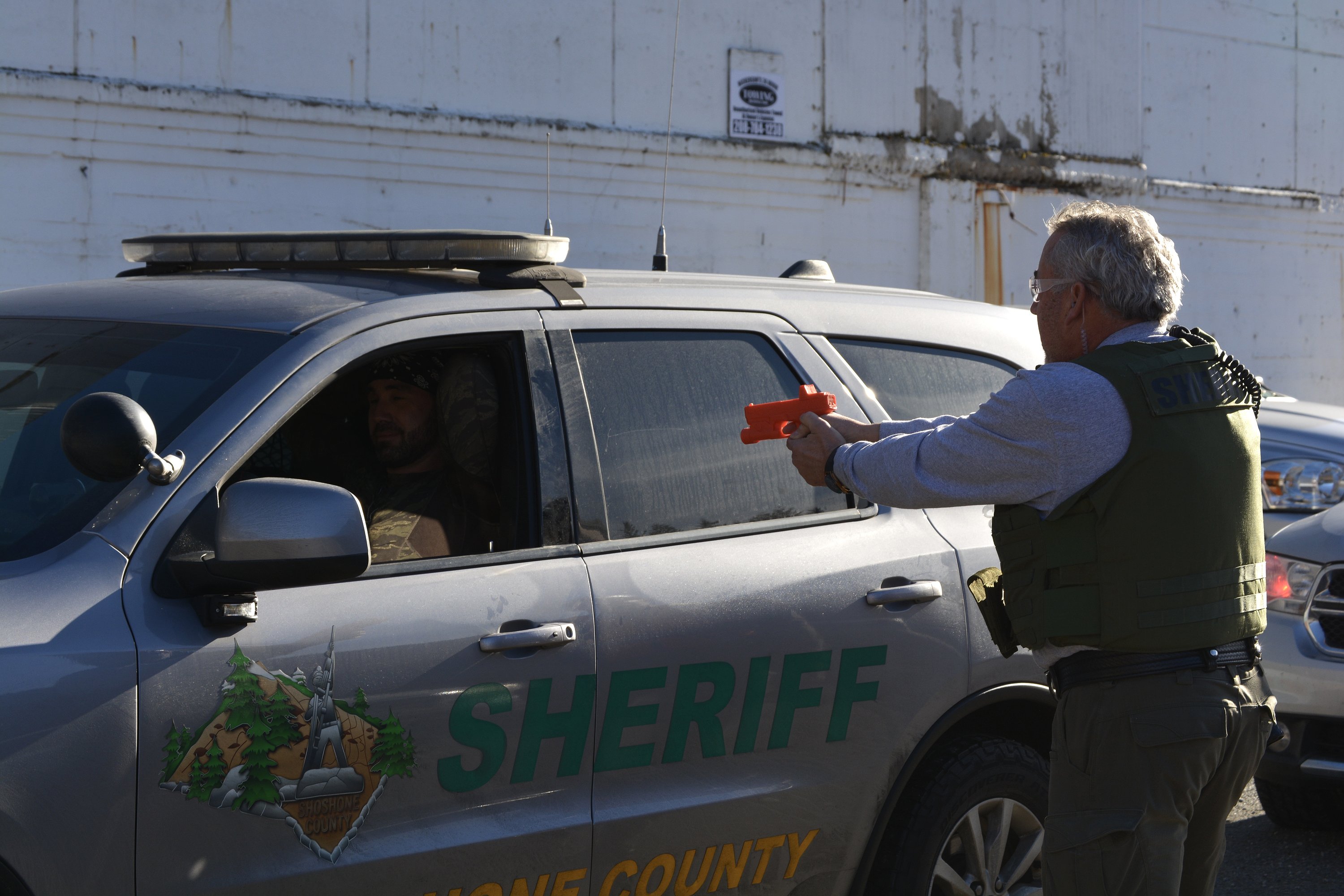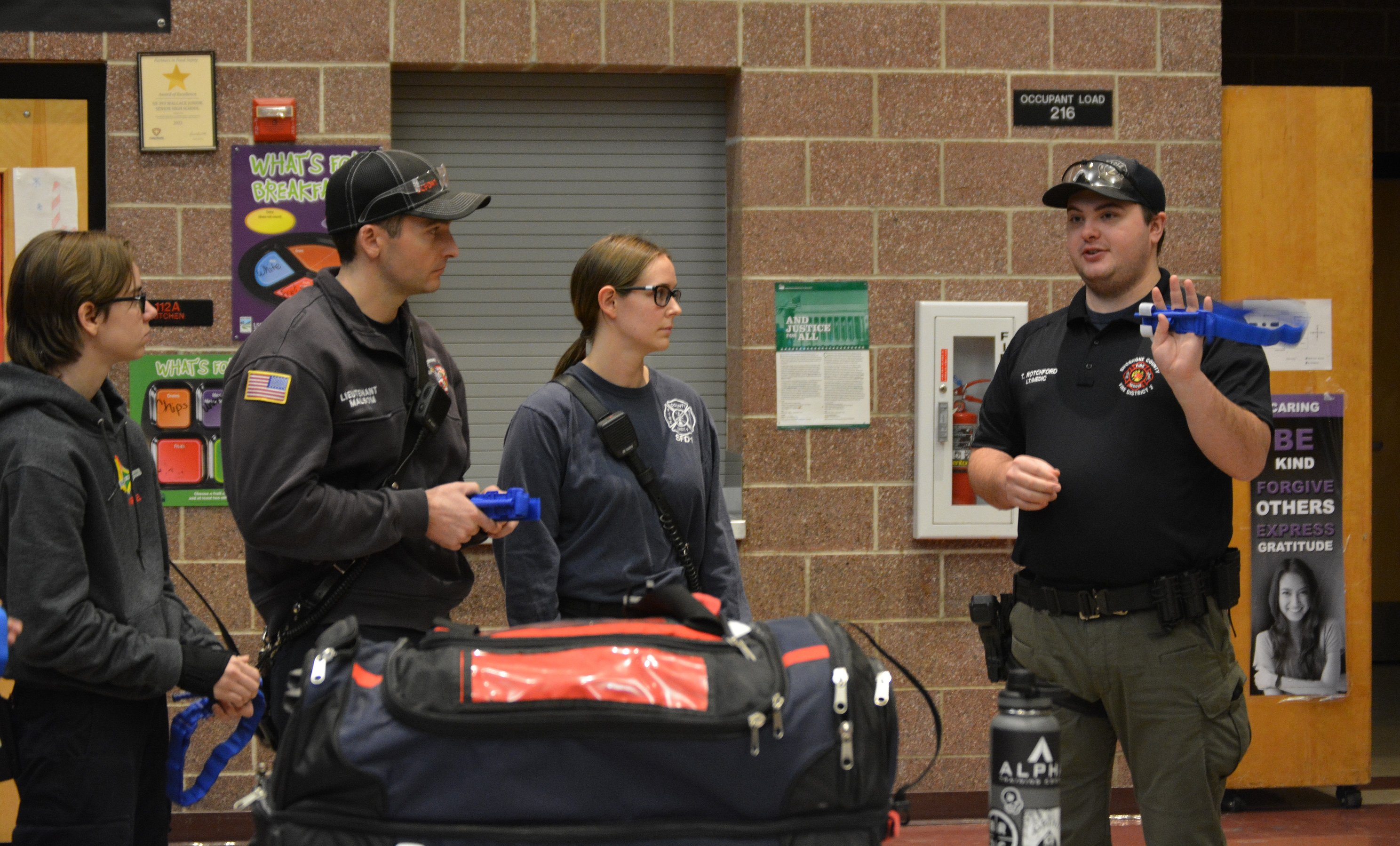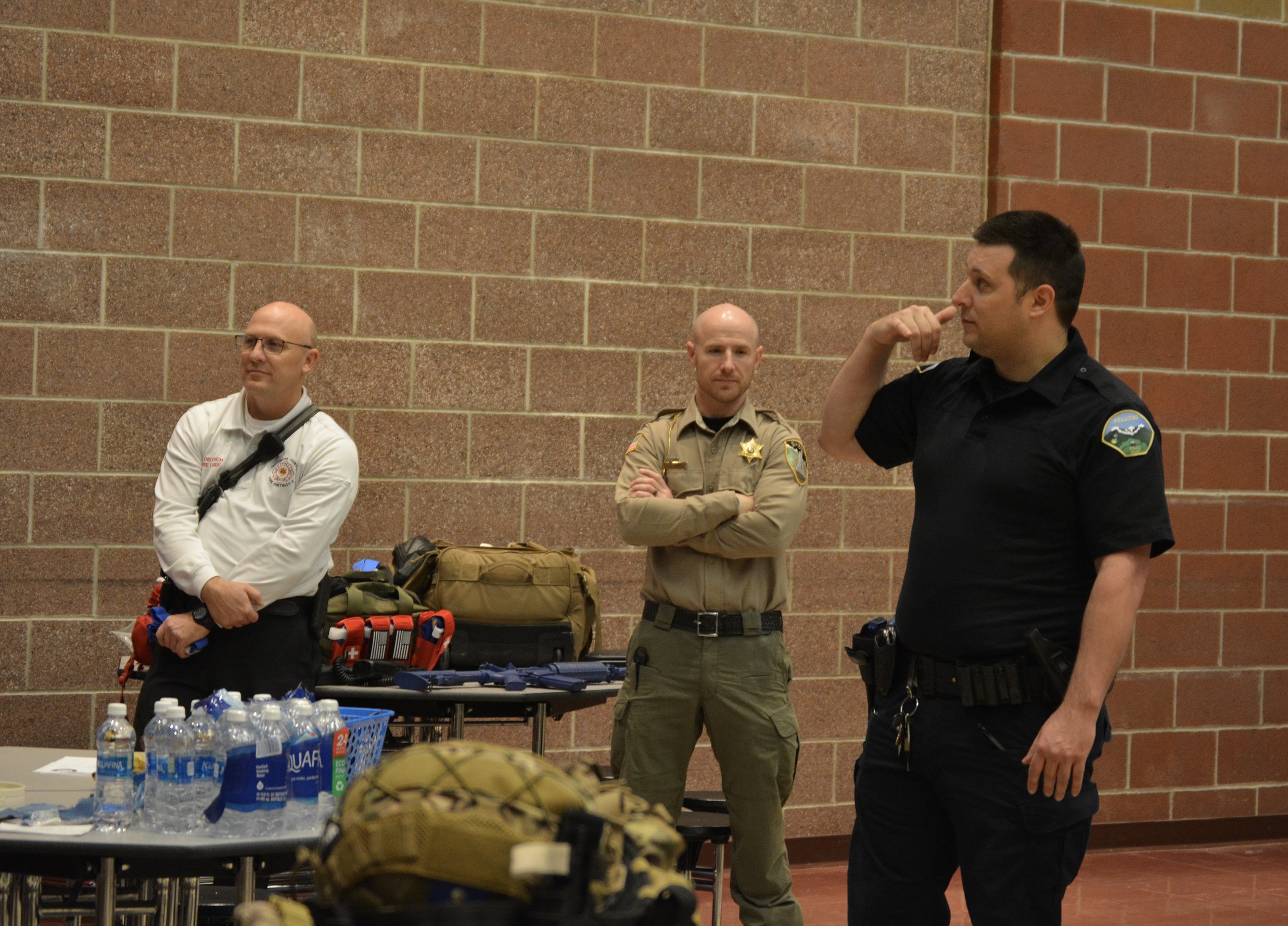Ready for anything
WALLACE — A routine traffic stop turned into a shootout Thursday morning in Wallace. Luckily, it was only a training scenario and law enforcement were both the role players and officers testing their responses in the field.
In the high school cafeteria, law enforcement traded their duty firearms for orange safety firearms and firefighters were issued blue training tourniquets throughout.
Capt. Eli Lopez donned civilian clothes to take other law enforcement officers through what to do if a traffic stop turned dangerous. After the simulated shootout, colleagues Mike Groves and Will Keller explained reasoning and strategy to best handle the situation.
Wallace High School became a training ground for emergency personnel from local fire/EMS and law enforcement to better hone how to address a mass casualty event if it ever occurred in the area. While the scenarios were oriented toward responses when there is an active shooter, Dameon Groves of Kellogg Police led the morning talk through best practices for active shooter responses and said that much of the coordination among first responders would be similar to setting up command stations to help with evacuations in the event of bad flooding or other natural disasters.
Being able to respond using simulations of potential situations that they might face as practice are more than just team-building exercises, they can cut down response times and lead to safer outcomes for everyone involved.
“The main goal is to get everybody working together and an understanding of what everybody else’s role is and how we can get everyone out safely and effectively,” Groves said.
Some of the scenarios involve stressors like pounding music being poured through the simulated “hot zone” as first responders try and determine what has happened and how to best keep civilians safe as well as their peers.
Having three staging areas with a hot, warm, and cold zone can help move everyone out of danger and into triage areas where EMS would be able to directly apply medical care in the field. Self care and then buddy care are key if individuals are unable to get out of dangerous areas.
Groves stressed that those responding to a situation that may involve mass casualties need to remember to consider at all times what is most important at each moment.
Flexibility is needed because roles can change at any time as new information is obtained about the crisis at hand.
Law enforcement and EMS need to stay together in lockstep until the crisis has been resolved. Keeping the lines of communication open across agencies as events move forward and plans have to change due to more information and the more agencies can start brainstorming ways to work together and relay information smoothly before an incident occurs can go a long way in helping at an emergency scene.
Shoshone Fire District No. 1 Chief John Miller said first responders in the county have come together twice in two months to tighten up responses and train side by side.
"These trainings help formulate a game plan. We are not in the business of 'figuring it out when we get there' as not having a plan is said to be planning to fail. ... Our community deserves and expects that," Miller said.
In addition to building up the relationship between law enforcement and EMS teams, everyone on hand at these exercises is working to find holes in current tactics and fill the gaps to identify weak areas.
“We’re doing course work, but we’re also putting it into action. We’re trying to just be as prepared and as progressive as we can be. If it were to happen, we definitely need to be on our game,” Miller said.
 Mike Groves approaches a vehicle driven by Eli Lopez with an orange safety weapon drawn. One of the training scenarios that law enforcement officers practiced was a traffic stop that took a dangerous turn. Both officers work for the Shoshone County Sheriff's Office, but today involved roleplaying to safely work through different emergency scenarios they might encounter.
Mike Groves approaches a vehicle driven by Eli Lopez with an orange safety weapon drawn. One of the training scenarios that law enforcement officers practiced was a traffic stop that took a dangerous turn. Both officers work for the Shoshone County Sheriff's Office, but today involved roleplaying to safely work through different emergency scenarios they might encounter.





